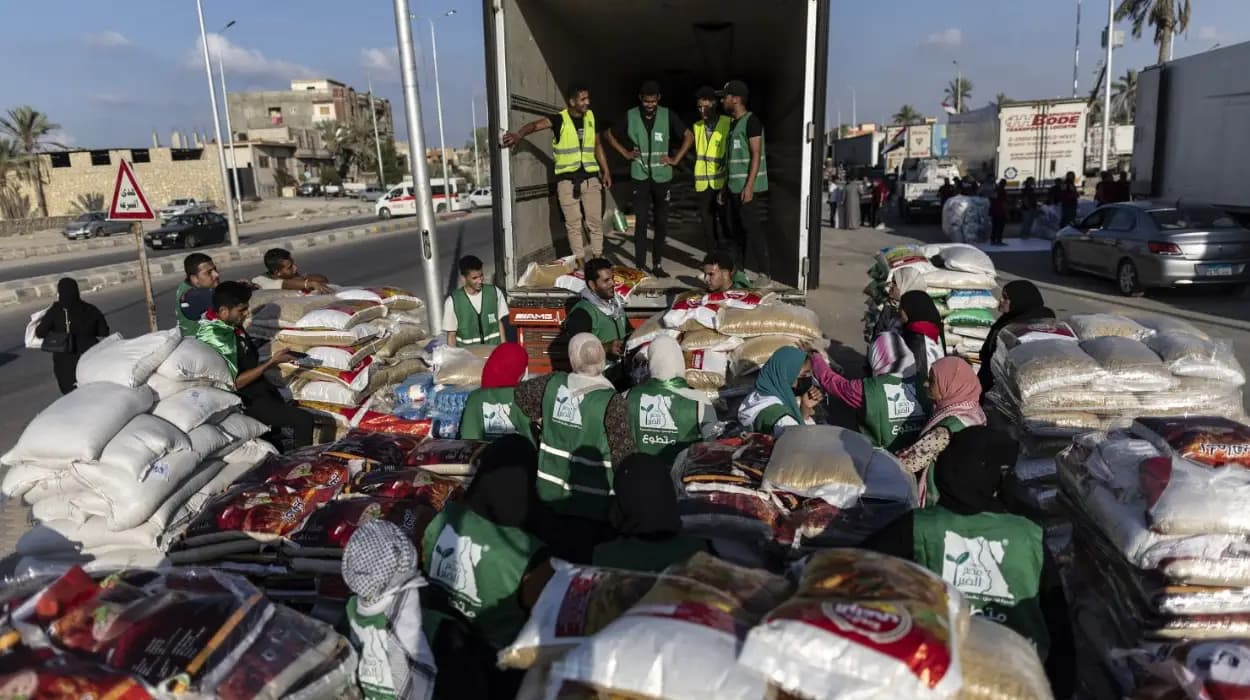The Gaza Strip is facing a severe humanitarian crisis
aggravated by prolonged conflict, blockades, and recurrent hostilities.
Millions of people depend on relief delivered by international organizations
amid extreme restrictions, insecurity, and infrastructure collapse.
Understanding who is providing aid, how that aid reaches those in need, and the
multiplicity of challenges involved is crucial to comprehending the ongoing
humanitarian situation in Gaza.
Background: Aid Delivery Before and After the 2023 Conflict
Since the early 1990s, Israel has imposed a blockade on
Gaza, gradually transforming into a near-total siege after 2007. This blockade,
justified by security concerns, has dictated the flow of goods, including
humanitarian aid. Before recent conflicts, roughly 500 to 600 aid trucks
entered Gaza daily to meet civilian needs, with estimates suggesting that more
than 1,000 trucks would be necessary to alleviate widespread hunger and
shortages. These trucks passed through heavily monitored border crossings such
as Kerem Shalom and Rafah under complex inspection regimes.
Blockades following the outbreak of hostilities in October
2023 initially prevented any humanitarian aid from entering Gaza. After intense
international pressure, limited deliveries resumed through crossings controlled
by Israel and Egypt, coordinated primarily by the United Nations Relief and
Works Agency (UNRWA), the International Federation of Red Cross and Red
Crescent Societies, and local Palestinian organizations.
Current Aid Providers and Their Operations
The main entities delivering aid to Gaza include UN agencies
such as UNRWA, the World Food Programme, UNICEF, and the World Health
Organization, along with international non-governmental organizations (INGOs)
like Save the Children and Médecins Sans Frontières. Local groups like the
Palestinian Red Crescent Society collaborate with these organizations to
distribute supplies within Gaza.
In February 2025, the Gaza Humanitarian Foundation (GHF) was
established with support from the Israeli and U.S. governments to distribute
aid in an attempt to bypass traditional UN mechanisms. However, this
organization has been controversial, facing criticism over operational
transparency and allegations of contributing to civilian casualties during
distribution, as well as criticism from UN experts calling for its
dismantlement. The UN and many long-established humanitarian organizations
emphasize coordinated aid efforts based on neutrality, international standards,
and respect for human rights.
Aid shipments primarily include essential food, water,
medical supplies, hygiene kits, shelter materials, and fuel. Despite
significant quantities of aid being approved for entry UN agencies recently
secured approval for 190,000 tonnes of supplies only a fraction reaches
populations due to ongoing restrictions and logistical difficulties.
Blockade, Ceasefires, and Aid Delivery Dynamics
The delivery of even these limited aid shipments is highly
contingent upon fragile ceasefires and political agreements. Temporary
ceasefires, such as the one in November 2023 and the October 2025 ceasefire,
allowed brief surges in aid deliveries, enabling thousands of trucks and
critical supplies to enter Gaza. Yet, reinstated hostilities often result in
border closures, halted convoys, and a breakdown in distribution networks.
Aid deliveries are routinely impeded by bureaucratic
obstacles, security inspections, and outright denials by Israeli authorities.
Between 10 and 21 October
2025, 99 requests by international NGOs to deliver aid were rejected, often
on the grounds that organizations were "not authorized," despite many
having longstanding operational agreements. Such restrictions have severe
humanitarian consequences, intensifying hunger, disease, and displacement. Aid
organizations continue to call for the lifting of these restrictions to prevent
famine and collapse of medical services.
Challenges in Aid Distribution and Security Concerns
Inside Gaza, aid distribution faces additional hazards. The
destruction of infrastructure, the absence of effective law enforcement, and
sporadic violence complicate the safe movement and equitable distribution of
supplies. A notable challenge is the near-total collapse of Gaza’s electrical
grid and telecommunications, which hampers coordination efforts.
Instances of armed groups interfering with convoys, illegal
appropriation of aid supplies, and exploitation of vulnerable populations have
been reported. The fragile security situation places humanitarian workers at
constant risk, with unusually high numbers of aid personnel casualties
recorded. Moreover, some civilians have suffered or died waiting for aid,
underscoring the critical nature of timely and secure delivery.
Human Impact and Casualties
Gaza’s civilian population is enduring catastrophic
hardships. Reports confirm famine conditions, acute malnutrition especially in
children, limited access to healthcare, and widespread displacement. Medical
facilities are overwhelmed and under-resourced, while shortages of clean water
and sanitation exacerbate health crises. The death toll includes thousands
killed by conflict-related violence and starvation, including aid-seeking
civilians impacted by military actions near distribution points.
International Reactions and the Way Forward
The international community remains divided on the political
aspects of the Gaza crisis but united in calls for unhindered humanitarian
access. UN agencies, the European Union, and major humanitarian NGOs continue
to advocate for open border crossings and protection for aid workers and
civilians.
While funding pledges exceed hundreds of millions of
dollars, the full realization of aid efforts faces ongoing political resistance
and security challenges. The controversial Gaza Humanitarian Foundation has
been criticized by UN experts and rights groups, further complicating aid
delivery strategies.
Who is delivering aid to Gaza is a story of international cooperation amid a highly constrained and volatile environment. UN agencies, dedicated NGOs, local partners, and contentious new actors like the Gaza Humanitarian Foundation are central to ongoing efforts. Despite securing substantial approvals for aid shipments, deliveries fall far short of needs due to blockade restrictions, renewed hostilities, and security challenges. Strengthening and safeguarding humanitarian aid routes, ensuring equitable distribution, and upholding international humanitarian obligations remain essential to alleviate one of today's most pressing human crises.
